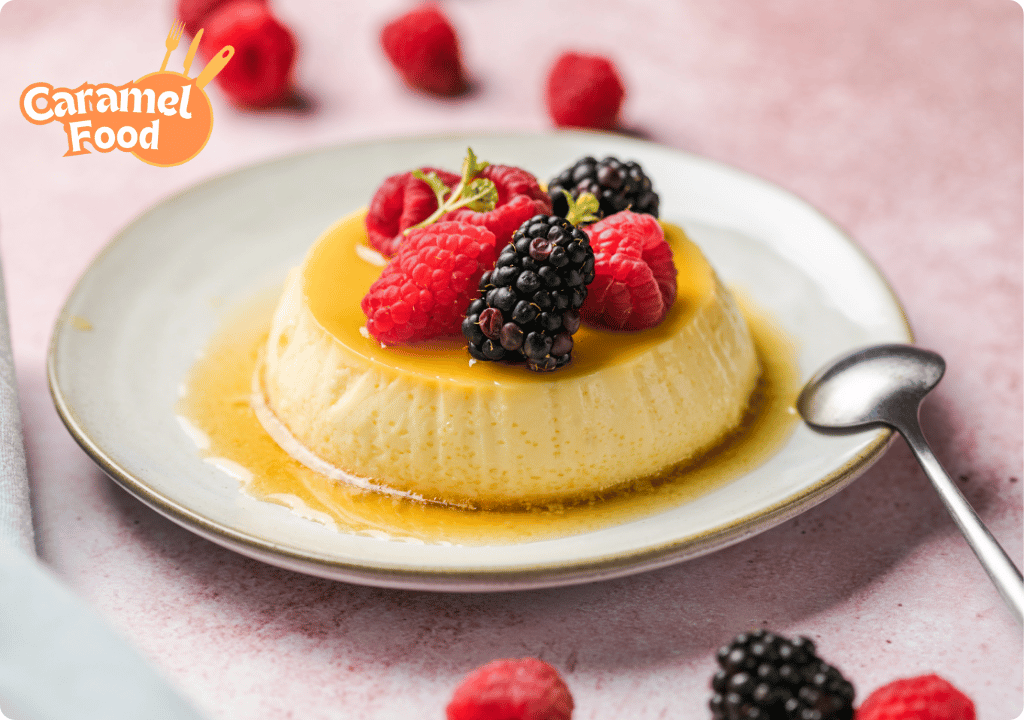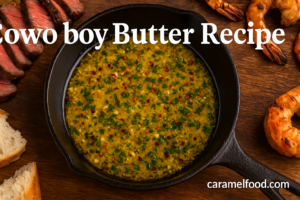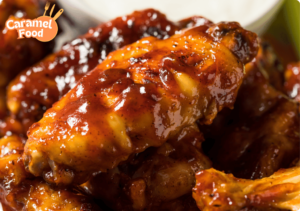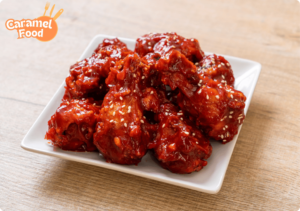Caramel is a culinary delight that has captivated sweet tooths for centuries. Its rich, buttery sweetness and smooth texture make it a versatile ingredient in a myriad of desserts.
From a simple caramel drizzle to a decadent caramel pudding, the possibilities are endless. The allure of caramel lies not only in its taste but also in its transformative properties in baking and dessert making.
This guide is designed to help you indulge in decadent caramel dessert recipes. It will take you on a journey through the sweet history of caramel, its various forms, and how to master its preparation.
You’ll learn about the essential ingredients for homemade caramel and how to achieve the perfect consistency. We’ll also share tips on pairing caramel with other flavors and ingredients to create mouthwatering desserts.
Whether you’re a home baker or a dessert enthusiast, this guide will equip you with the knowledge and inspiration to create your own caramel-infused masterpieces. So, let’s embark on this sweet adventure together.
The Sweet History of Caramel
Caramel’s origins are somewhat mysterious but steeped in intrigue. This delightful concoction is believed to have emerged in the early 17th century. Its simple ingredients and appealing taste quickly made it a favorite among confectioners and bakers.
Sugar has been a key ingredient in many cultures for centuries, and caramel owes its existence to sugar’s transformative abilities. By heating sugar to just the right temperature, caramel’s signature color and flavor are born. This process, known as caramelization, fundamentally changes the sugar’s structure.
As time progressed, caramel grew beyond its humble beginnings. By the 18th century, it had made its mark across Europe and America, expanding into candies and sauces. Each region adapted caramel to fit local tastes and preferences, furthering its global appeal.
Today, caramel is a beloved component of countless recipes worldwide. From traditional sweets like toffee and butterscotch to modern gourmet desserts, its influence is undeniable. The sweet allure of caramel remains timeless, continually inspiring new culinary creations.
Its journey from a simple sugar delight to a staple in fine pastries shows caramel’s enduring charm. It captures hearts with its unique blend of rich flavors and creamy textures.

Understanding Caramel: Sauce, Candy, and Caramelized Sugar
Caramel exists in various forms, each with unique characteristics and uses. At the heart of this confectionery are the processes of caramelization and ingredient manipulation. Mastering these allows for the creation of diverse caramel treats.
Caramel sauce is a luscious, smooth concoction, often used as a topping or filling. Its luxurious texture makes it perfect for drizzling over cakes, ice cream, and more. To create caramel sauce, sugar is cooked until it melts and turns golden brown, then cream or butter is added.
In contrast, caramel candy is firm and chewy. The candy-making process generally involves cooking sugar with butter and cream until reaching a specified temperature. This blend is then allowed to cool, resulting in a delightful, chewy treat.
Caramelized sugar, another variant, forms the basis for many other caramel creations. This involves slowly heating sugar until it melts and darkens, developing its distinctive taste. Caramelized sugar often serves as a flavor base or crunchy topping.
Key differences between these forms of caramel include:
- Caramel Sauce: Liquid, used for drizzling or filling.
- Caramel Candy: Firm, chewy texture, used in candies.
- Caramelized Sugar: Hard, brittle form, used as a base or garnish.
Understanding these variations can enhance your culinary exploits, bringing sweet caramel magic to your kitchen.
Essential Ingredients for Homemade Caramel
Making homemade caramel is both rewarding and straightforward when you have the right ingredients on hand. The simplicity of caramel is part of its charm, yet each component plays a crucial role in the final product.
Sugar is the primary ingredient in any caramel recipe. Granulated white sugar is most commonly used due to its pure sweetness and consistent melting properties. As the sugar melts, it caramelizes, creating the characteristic rich, amber color and taste.
Butter provides a creamy texture and rich flavor. It also aids in balancing the sweetness. Opt for unsalted butter to have more control over the salt content in your recipes. Adding butter to melted sugar helps in forming a smooth and cohesive mixture.
Cream is essential for creating a silky caramel sauce. It prevents crystallization and incorporates a luscious velvety finish to the caramel. Depending on the recipe, you may also use milk or condensed milk.
Here’s a basic list for homemade caramel:
- Granulated Sugar: The cornerstone of caramel.
- Butter: Adds creaminess and richness.
- Heavy Cream: Ensures a smooth, velvety texture.
With these ingredients, you’re ready to embark on a caramel adventure in your own kitchen. Adjusting proportions can lead to delightful caramel variations, from sauces to candies.
Mastering the Perfect Caramel Sauce: A Step-by-Step Guide
Creating caramel sauce requires patience and precision. Start with a sturdy, heavy-bottomed pan. This ensures even heat distribution, preventing burnt spots and promoting consistent caramelization.
Begin by adding sugar to your pan. Pour the sugar in a thin, even layer. Avoid stirring initially, as this can cause crystallization and uneven melting.
Gradually melt the sugar over medium heat. As it starts to liquefy, swirl the pan gently. This helps distribute the heat and melts the sugar evenly without disturbing it too much.
Once the sugar has completely melted and reached an amber hue, it’s time to add the butter. Cut the butter into pieces to help it incorporate quickly and smoothly. Be cautious, as adding butter causes the mixture to bubble vigorously.
Stir the mixture swiftly but carefully until the butter is fully melted. This step helps achieve that beautifully cohesive and creamy consistency.
After the butter is incorporated, slowly pour in the cream. Again, expect bubbling and steam. Incorporate the cream in a steady stream, while stirring continuously.
Continue stirring until the caramel sauce is smooth and fully mixed. Allow it to simmer briefly on low heat to let the flavors meld together.
Finally, remove from heat and let the sauce cool slightly before using or storing. You now have a luscious caramel sauce ready to enhance various desserts. Mastering these steps results in a silky sauce perfect for drizzling or dipping.
Tips to Prevent Crystallization and Achieve Ideal Consistency
Crystallization is a common issue when making caramel. It results in a grainy texture that can ruin your dessert.
Preventing crystallization starts with a clean pan. Ensure there are no sugar residues or other particles that can initiate crystal formation.
Using the right sugar is crucial. Regular granulated sugar usually works best, providing a consistent melt.
To minimize crystallization, you can also use an interfering agent. Consider adding a small amount of corn syrup or lemon juice. These ingredients alter the sugar’s structure, reducing the chance of crystals forming.
Maintaining the correct heat is another important factor. Cook sugar at a medium setting to ensure an even melt.
Here are key tips to achieve the ideal caramel consistency:
- Brush down sugar crystals on the pot’s sides with a pastry brush dipped in water.
- Avoid stirring until the sugar has completely melted.
- Keep your heat constant to prevent sudden temperature changes.
By following these tips, you can prevent crystallization and achieve that perfect, smooth caramel. The result is a luscious texture ready to elevate any dessert.
Temperature and Timing: The Secrets to Perfect Caramel Color
Achieving the perfect caramel color hinges on temperature and timing. Caramelization occurs between 320°F and 350°F. At this point, sugar transforms, resulting in the desired amber hue.
Timing is critical. Keep a close eye on your caramel as it cooks. It can quickly change from perfect to burnt.
Use a candy thermometer if you have one. This tool helps monitor the sugar’s temperature with precision. The right temperature ensures consistency and color.
Removing caramel from heat at the ideal moment is vital. The residual heat can cause the caramel to continue cooking even after removal. This can lead to a darker, bitter taste.
Moving swiftly yet carefully can make all the difference. With these strategies, you’ll consistently create caramel with the perfect tone. This will add elegance to any dessert you prepare.
Pairing Caramel with Flavors and Ingredients
Caramel’s rich, buttery taste can stand alone, but it shines when paired with complementary flavors. Bringing diverse ingredients together enhances the depth of any caramel dessert, creating a more dynamic taste experience.
Consider pairing caramel with flavors that offer contrast. The sweetness of caramel contrasts beautifully with salty, tangy, or bitter elements. This balance elevates the overall flavor profile of your dish, making it more engaging to the palate.
Here are some popular pairings to consider for your caramel creations:
- Fruits: Apples, bananas, and pears
- Nuts: Pecans, almonds, and walnuts
- Spices: Cinnamon, nutmeg, and ginger
- Dairy: Cream cheese and mascarpone

In addition to these classic pairings, don’t shy away from experimenting with unexpected combinations. Herbs like rosemary or thyme can introduce a subtle earthiness that complements caramel’s sweetness. Ultimately, the key is to balance flavors, allowing caramel to harmonize with other elements without overpowering them.
Classic Caramel Pudding and Its Variations
Caramel pudding, with its creamy texture and rich flavor, remains a cherished favorite. This classic dessert harmoniously blends sweetened caramel with smooth, silky custard. It’s the perfect choice for those seeking both comfort and elegance in a dessert.
To prepare a basic caramel pudding, begin by creating a luscious caramel base. Gently heat sugar until it melts and turns a golden amber. Pour this caramel into a dish, allowing it to coat the bottom before setting aside to cool.
Next, prepare your custard mixture. Whisk together eggs, milk, and vanilla until smooth. Pour it over the set caramel, then bake the dish in a bain-marie. This method ensures a gentle cooking process, resulting in a pudding with a delicate, melt-in-your-mouth texture.
For those looking to add a twist, consider experimenting with variations. Flavored extracts, such as almond or coconut, can add a new dimension. Incorporating spices or chocolate creates a delightful mix that excites the palate.
Finally, remember that caramel pudding offers a blank canvas for creativity. Seasonal fruits, nuts, or even a touch of rum can be added to customize your creation. Whether you stick to tradition or explore new flavors, caramel pudding remains a timeless and versatile dessert.
Artful Plating and Presentation of Caramel Desserts
Plating caramel desserts with flair can elevate a simple dish to a gourmet experience. The golden hue of caramel serves as an eye-catching centerpiece. Pairing it with complementary colors enhances the visual appeal.
Consider using contrasting textures and elements. A smooth caramel sauce drizzled over crisp, baked goods creates an enticing presentation. Fresh berries or a sprig of mint can add vibrancy and balance.
Finally, focus on symmetry and spacing. Evenly spaced components create harmony on the plate, while delicate caramel designs, like swirls or lattice, add elegance. Thoughtful presentation makes indulgence a feast for both the eyes and palate.
Caramel Drizzle and Topping Techniques
Creating the perfect caramel drizzle transforms any dessert into a culinary masterpiece. To start, ensure your caramel sauce is the right consistency. It should be smooth yet thick enough to hold its shape when drizzled.
A simple technique involves using a spoon to let the caramel fall gracefully over desserts. For more precision, pour the caramel into a squeeze bottle. This tool offers control, allowing you to create intricate designs or neat lines.
Varying the thickness of the drizzle can add depth to the presentation. A thin drizzle provides a subtle touch, while a thicker one offers a bold, rich accent. Adapt the technique based on the dessert’s texture to achieve the best contrast and flavor integration. Remember, practice makes perfect—each attempt refines your skill, enhancing the dessert’s appeal.
Vegan and Gluten-Free Caramel Dessert Options
Caramel lovers with dietary restrictions need not miss out. Delicious vegan and gluten-free caramel desserts exist and are enjoyable. These alternatives often use plant-based ingredients.
For vegan caramel, replace dairy with coconut cream or almond milk. Coconut cream offers richness similar to traditional cream, making it a popular substitute. Coconut sugar or maple syrup can replace refined sugar for more natural sweetness.
Here are a few options for creating inclusive caramel desserts:
- Vegan Caramel Sauce: Use coconut cream, coconut sugar, and vanilla extract.
- Gluten-Free Caramel Brownies: Utilize almond flour and vegan caramel drizzle.
- Date-Based Caramel Dip: Blend dates with almond milk and a touch of sea salt.
These variations ensure everyone can indulge in caramel delights. Experiment with ingredients to find the perfect balance of flavors and textures. Embrace creativity to cater to diverse dietary needs without sacrificing taste.
Seasonal and No-Bake Caramel Treats
Caramel desserts can charm throughout the year. Seasonal flavors enhance the indulgence, offering something unique. From autumn apples to summer berries, caramel complements various ingredients beautifully.
No-bake caramel treats require minimal effort and time. Perfect for warm weather or when you need quick satisfaction. They keep your kitchen cool while delivering a sweet punch.
Here are some ideas for seasonal and no-bake caramel delights:
- Fall: Caramel apple slices with crushed nuts.
- Winter: No-bake caramel pecan tart.
- Spring: Caramel and strawberry parfaits.
- Summer: Caramel banana icebox cake.
These desserts showcase caramel’s ability to blend seamlessly with diverse tastes. The options encourage creativity in the kitchen without needing an oven. Whether it’s a cozy night or a sunny day, caramel treats are versatile and satisfying. Celebrate each season with these delicious caramel creations.
Decadent Caramel Cheesecake Recipe
Cheesecake is a classic dessert that can be transformed with caramel. Imagine smooth, creamy layers accented by the rich caramel flavor. This decadent caramel cheesecake is sure to be a crowd-pleaser.
Start with a buttery graham cracker crust. It’s an excellent foundation for the luscious filling. For best results, use high-quality ingredients for both crust and filling.
The filling consists of cream cheese, sugar, and eggs. Vanilla extract adds a touch of complexity, while caramel sauce enhances the richness. Blend these ingredients until creamy and smooth.
Once the filling is ready, pour it over the crust. Bake the cheesecake until set, ensuring it remains velvety. Patience is key—let it cool slowly to prevent cracks.
Drizzle homemade caramel sauce over the cooled cheesecake. It adds a glossy finish and extra flavor. For contrast, sprinkle a pinch of sea salt on top.
This recipe captures the essence of indulgence. The combination of caramel and cheesecake creates a harmonious balance. Each bite offers a delightful mixture of sweetness and creaminess.
Caramel-Infused Frostings and Fillings
Caramel-infused frostings and fillings add a special touch to any baked good. They elevate cakes, cupcakes, and pastries with their rich, buttery sweetness. The infusion of caramel makes these treats memorable.
To create a caramel frosting, start by making a caramel sauce. Once it cools, whip it into buttercream or cream cheese. The result is a silky topping that pairs well with chocolate and vanilla cakes.
For fillings, blend caramel sauce with pastry cream or custard. This combination makes a delightful filling for éclairs or doughnuts. It adds both flavor and texture to each bite.
Incorporate caramel into frostings and fillings for your next dessert. It brings depth and warmth to traditional recipes. Experiment with different combinations to find your favorite. The possibilities are endless, and the results are always indulgent.
Caramel Dessert Recipes from Around the World
Caramel desserts hold a special place in cuisines worldwide. Each region adds its own unique spin to the delightful caramel flavor. These global recipes offer a rich tapestry of tastes and textures.
In Latin America, dulce de leche is a cherished caramel treat. It consists of slowly cooking milk and sugar until a thick, creamy sauce forms. It often tops pancakes, fills cakes, or even enjoyed on its own.
European countries embrace caramel in diverse ways. In France, you’ll find caramelized tarts like the famous Tarte Tatin. Meanwhile, in Italy, panna cotta sometimes features a luscious caramel sauce drizzle.
Across Asia, caramel desserts capture a range of flavors. For instance, the Philippines offers leche flan, a decadent caramel-laden custard. It’s a staple at celebrations, showcasing the sweet notes of caramel paired with creamy textures.
Here’s a quick list of caramel dessert styles from around the globe:
- Dulce de Leche (Latin America)
- Tarte Tatin (France)
- Leche Flan (Philippines)
- Caramel Panna Cotta (Italy)
Conclusion: The Joy of Caramel Desserts
Caramel desserts bring joy and warmth to any occasion. Their rich, buttery sweetness creates a comforting and indulgent experience. Whether a simple drizzle or a complex cake, caramel elevates desserts to new heights.
Mastering caramel recipes opens up a world of culinary creativity. With practice, you’ll find countless ways to incorporate this versatile ingredient. From traditional recipes to innovative twists, caramel captivates the palate.
So, indulge in your caramel cravings and embrace the art of these desserts. Enjoy the process and savor each delicious moment. Caramel’s magic lies in its ability to bring pleasure and satisfaction with every bite.



